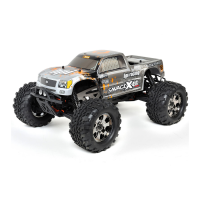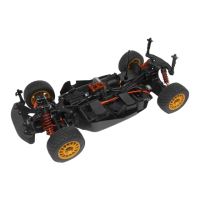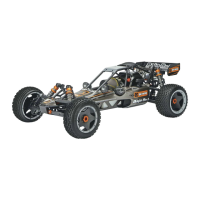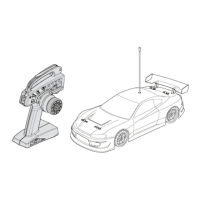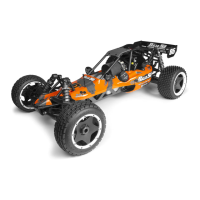
Do you have a question about the HPI Racing SAVAGE XL FLUX and is the answer not in the manual?
| Type | Monster Truck |
|---|---|
| Scale | 1/8 |
| Power Source | Electric |
| Motor Type | Brushless |
| Drive System | 4WD |
| Battery Type | LiPo |
| Chassis | TVP (Twin Vertical Plate) |
| Length | 585 mm |
| Height | 254mm |
| Battery Voltage | 14.8V |
| Suspension | Double Wishbone |
General warnings about kit damage and injury if instructions are not followed.
Warnings about personal injury, property damage, or kit damage.
Lists main parts, included tools, and accessories in the kit.
Lists additional tools and equipment required for operation.
Details recommended Li-Po battery types, ratings, and dimensions.
Provides safety advice for handling Li-Po batteries and connector types.
Instructions on how to charge the vehicle's battery.
Initial setup steps including transmitter battery installation.
Explains how to set the Reverse and Mode switches on the transmitter.
Initial steps for accessing and preparing for battery installation.
Instructions on using foam to secure the batteries in place.
Steps for connecting the ESC and battery, and disconnecting.
Steps for setting up the ESC, including transmitter trim and antenna.
Detailed procedure for programming the ESC and verifying the setup.
Explains the fail-safe system and situations when it operates.
Steps to verify the fail-safe system is working correctly.
Steps for turning on the transmitter and vehicle correctly.
How to check the operational range of the radio system.
Guide on how to adjust the steering trim for straight-line driving.
Explanation of steering wheel, throttle trigger, and trim functions.
Describes the two methods for engaging reverse gear.
Advice on practicing driving, cooling down, and handling steering reversal.
Importance of monitoring temperatures to prevent damage.
How the ESC's thermal protection feature works.
Correct sequence for turning off the receiver and transmitter.
Lists places where the car should not be operated due to safety risks.
Troubleshooting steps for when the car doesn't move or respond to controls.
Troubleshooting for loss of control, antenna, or trim problems.
Solutions for reversed steering or throttle functions.
Chart detailing maintenance intervals based on usage.
Lists essential tools and materials for performing maintenance.
Instructions for cleaning and lubricating the chassis after use.
Guide to checking tire security and re-gluing if necessary.
How to replace the pinion gear and adjust gear mesh.
Method for setting the correct gear mesh to prevent damage.
How to adjust the slipper clutch for different track conditions.
Steps for inspecting shocks for leaks, bent shafts, and performing repairs.
Detailed steps for refilling shock absorbers with oil and removing air bubbles.
Method for protecting the shock shaft during maintenance.
Steps for disassembling and maintaining the differential.
How to adjust throttle trim, steering trim, dual rate, and reverse switch.
Explanation of battery level indicator, antenna, bind switch, and EPA.
Guide for connecting the receiver, steering servo, ESC, and antenna.
Information on ESC thermal protection and fail-safe features.
Steps for binding the transmitter and receiver, including France mode selection.
Detailed instructions for completing the transmitter-receiver binding process.
Detailed steps for setting up the fail-safe system after binding.
Guide for adjusting steering and throttle end points to prevent servo damage.
Initial steps and precautions before changing ESC settings, especially for LiPo batteries.
How to enter programming mode, select modes, and save settings.
Explanation of how programmable modes are represented and selected.
Summary of available programmable modes and their values.
Explains running modes, drag brake force, and punch start settings.
Covers LiPo cut-off, reverse force, timing, and thermal protection.

